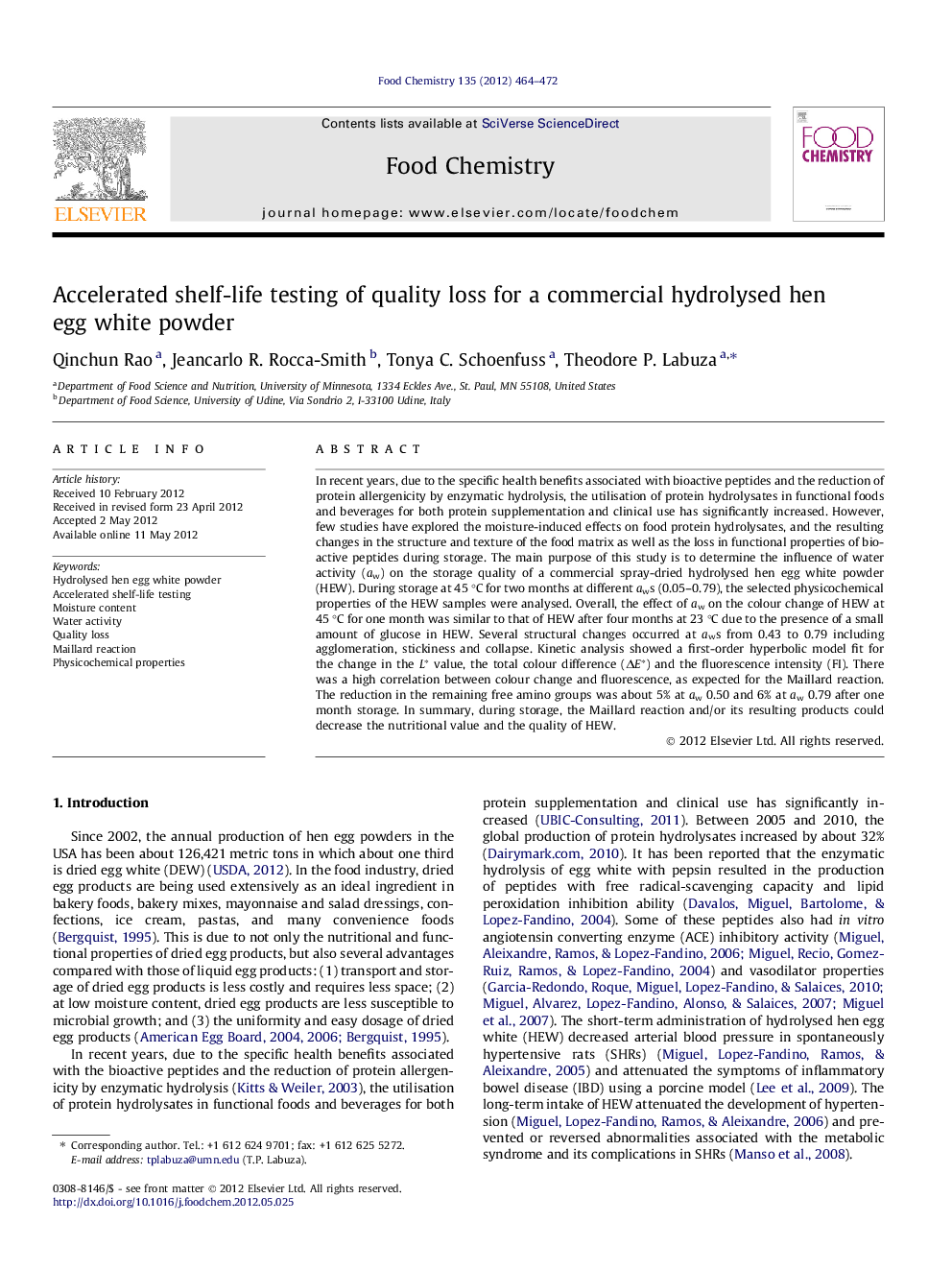| Article ID | Journal | Published Year | Pages | File Type |
|---|---|---|---|---|
| 1185761 | Food Chemistry | 2012 | 9 Pages |
In recent years, due to the specific health benefits associated with bioactive peptides and the reduction of protein allergenicity by enzymatic hydrolysis, the utilisation of protein hydrolysates in functional foods and beverages for both protein supplementation and clinical use has significantly increased. However, few studies have explored the moisture-induced effects on food protein hydrolysates, and the resulting changes in the structure and texture of the food matrix as well as the loss in functional properties of bioactive peptides during storage. The main purpose of this study is to determine the influence of water activity (aw) on the storage quality of a commercial spray-dried hydrolysed hen egg white powder (HEW). During storage at 45 °C for two months at different aws (0.05–0.79), the selected physicochemical properties of the HEW samples were analysed. Overall, the effect of aw on the colour change of HEW at 45 °C for one month was similar to that of HEW after four months at 23 °C due to the presence of a small amount of glucose in HEW. Several structural changes occurred at aws from 0.43 to 0.79 including agglomeration, stickiness and collapse. Kinetic analysis showed a first-order hyperbolic model fit for the change in the L∗ value, the total colour difference (ΔE∗) and the fluorescence intensity (FI). There was a high correlation between colour change and fluorescence, as expected for the Maillard reaction. The reduction in the remaining free amino groups was about 5% at aw 0.50 and 6% at aw 0.79 after one month storage. In summary, during storage, the Maillard reaction and/or its resulting products could decrease the nutritional value and the quality of HEW.
► Structural changes occurred including agglomeration, stickiness and collapse. ► A first-order hyperbolic model fit for the change in storage quality parameters. ► Significant quality loss was found for the HEW powder system at aw > 0.31. ► The remaining free amino groups decreased about 5% at aw 0.50 and 6% at aw 0.79. ► The Maillard reaction decreased the nutritional value and the quality of HEW.
